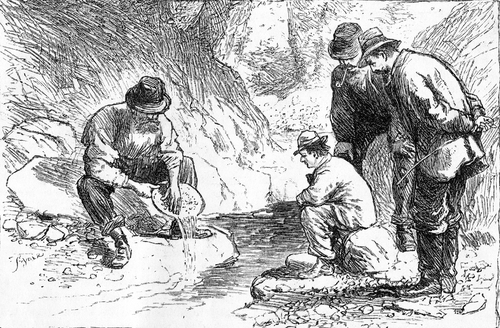Placer and Vein Mining
The first miners sought surface gold eroded from veins of underground gold ore, or “lodes.” They could find this “placer” gold with the most basic equipment: a pan—often made from a skillet—a balance, rocker, hoe, picks, and shovels. This era of gold panning was short, however, replaced by more complicated vein-mining that followed gold-bearing lodes into the ground. Miners would dig down through the gravel layer and shovel the material yard by yard through rockers and sluices, keeping the gold dust that emerged and sending the rest of the earth and stone downstream.
Improvements on panning included the use of rockers made from hollowed out tree trunks.
Early mining machines such as the “hollow gum” and inclined plane allowed larger amounts of gravel to be washed while catching the particles of gold.
A classifier sieve with openings separated out larger pieces of rock and other material allowing only finer sand and gravel through. Between the sieve and the lower sluice section is an apron that distributes material across riffles along the bottom, which traps the gold.


